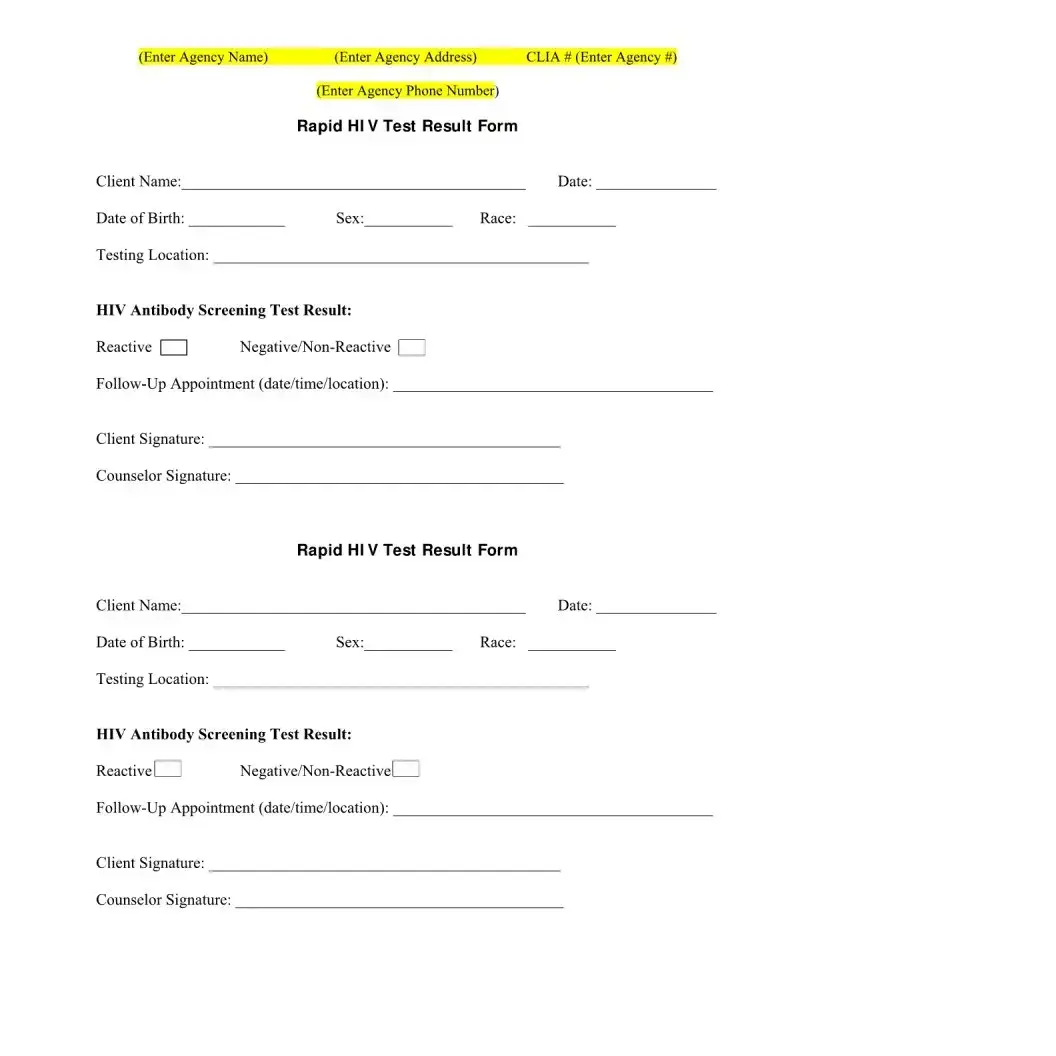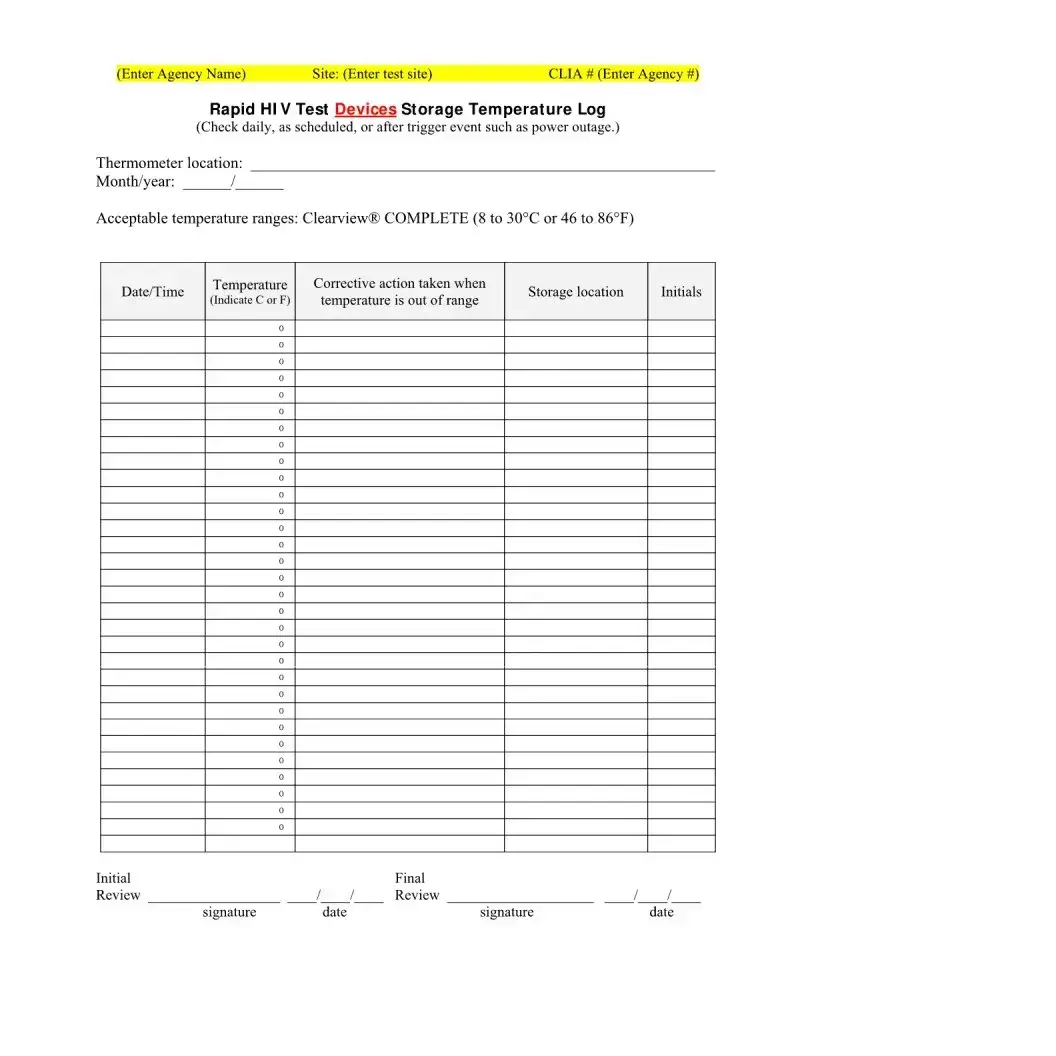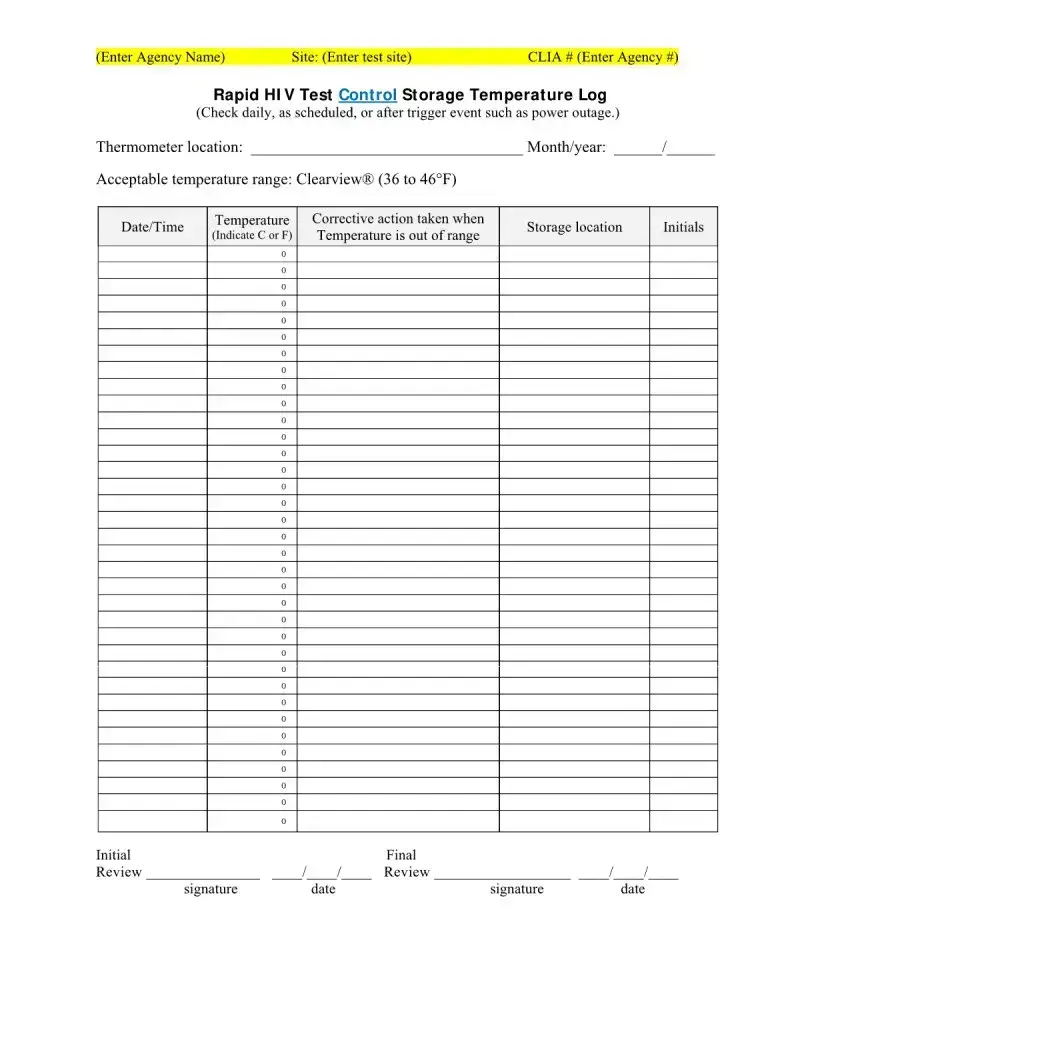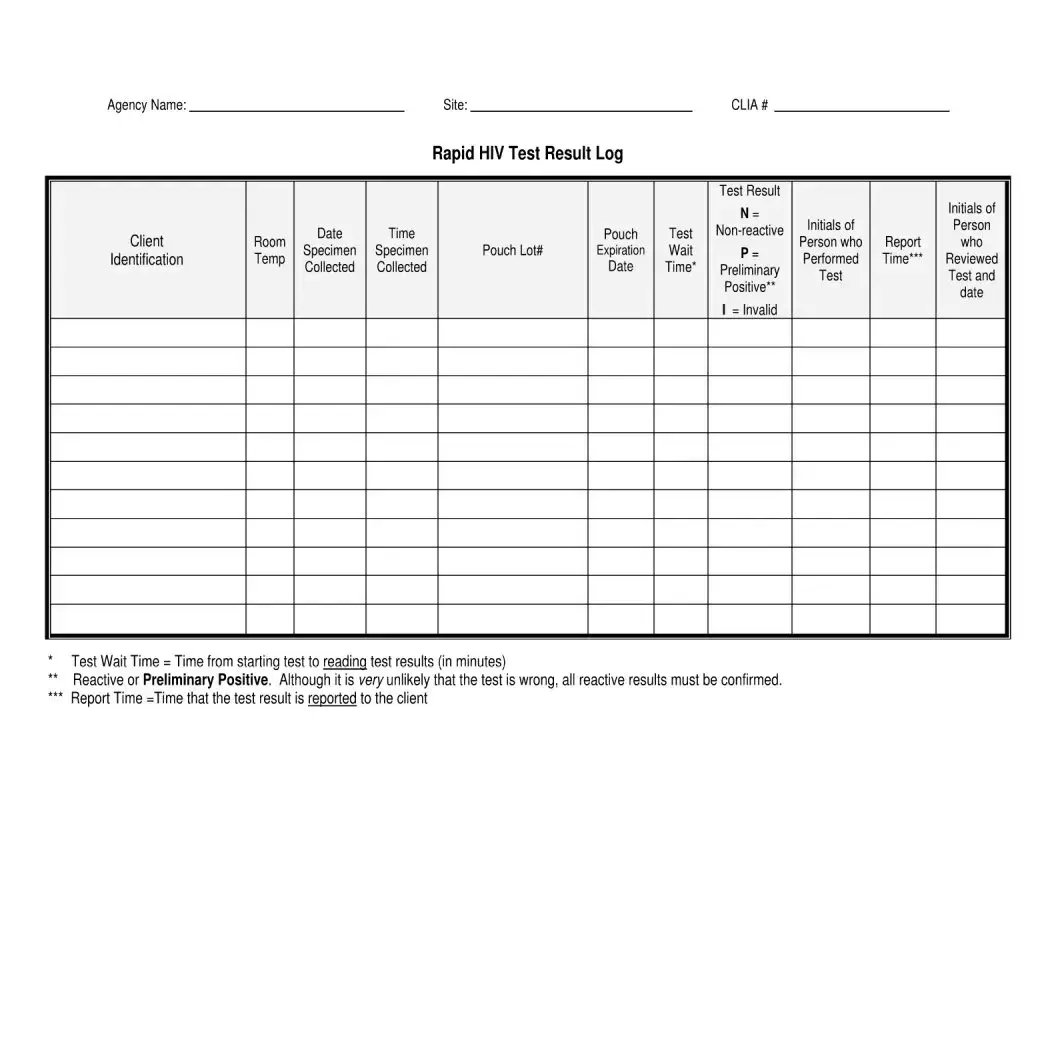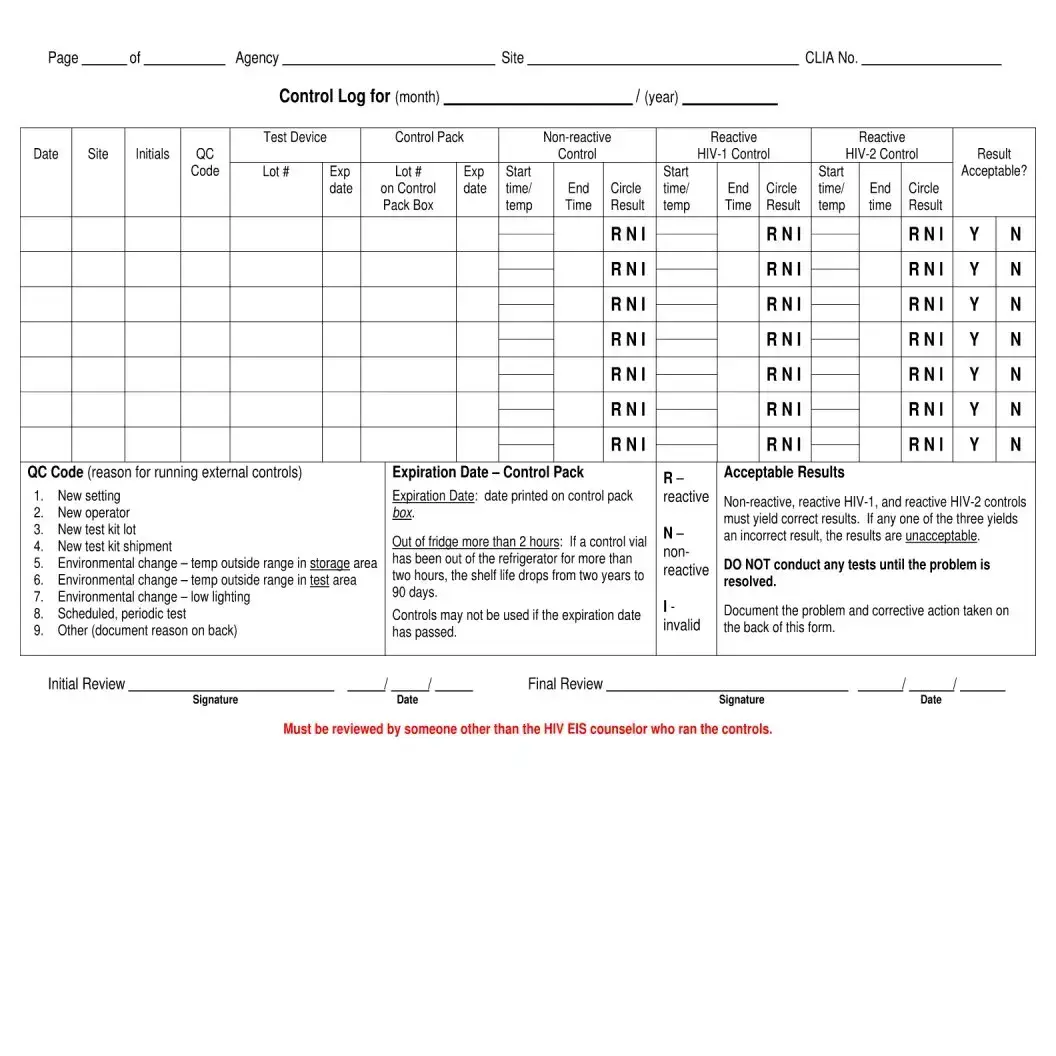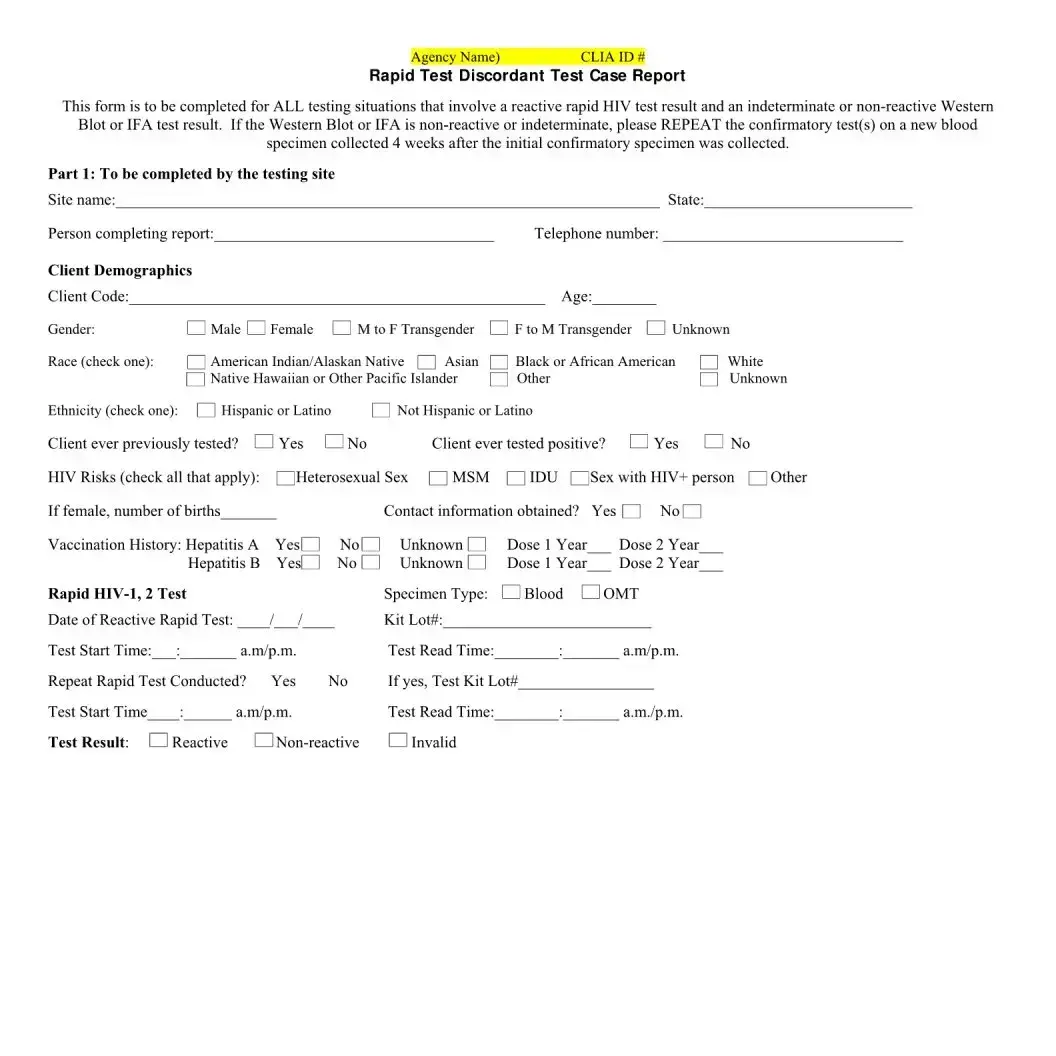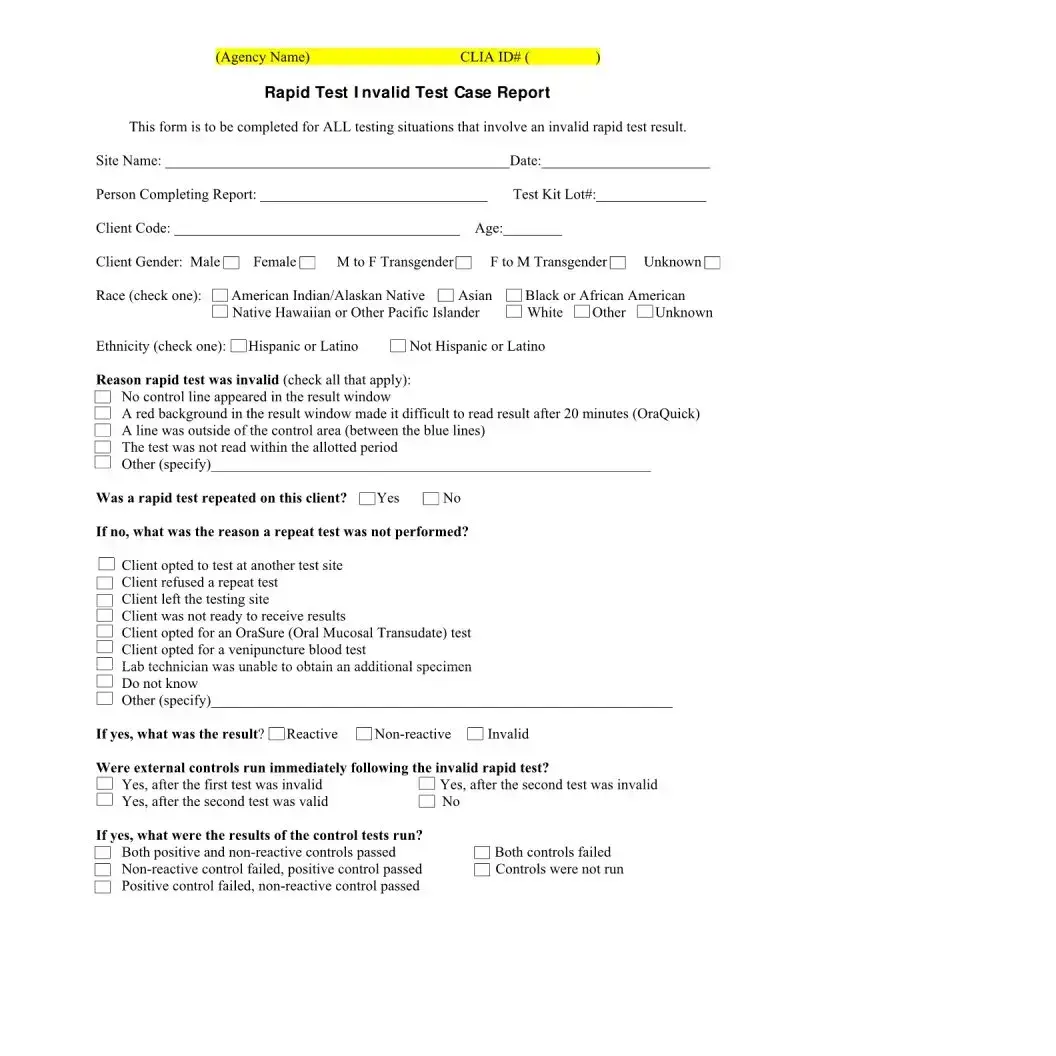What is a Negative HIV Test form?
A Negative HIV Test form is a document provided by healthcare agencies or testing sites that records the result of an HIV test. It includes information such as the client's name, date of birth, race, sex, testing location, the outcome of the HIV antibody screening test, and details on any follow-up appointments. This form also verifies that the test performed was either reactive or non-reactive/negative.
What does a "non-reactive" test result mean?
A "non-reactive" test result, also marked as negative, means that no HIV antibodies were detected in the test sample. It suggests that the individual tested does not have HIV at the time of the test. However, it's important to remember that there is a window period during which the virus may not be detectable. Follow-up testing may be recommended.
Why does the form include a section for follow-up appointments?
The section for follow-up appointments is included to ensure that individuals receive the necessary support and further testing if required. For those with a reactive (preliminary positive) result, confirmatory testing is crucial for accurate diagnosis. Follow-up appointments also provide an opportunity for counseling and to discuss preventive measures.
What is the significance of storing rapid HIV test devices at specific temperatures?
Rapid HIV test devices must be stored within certain temperature ranges to ensure their accuracy and reliability. If the devices are stored at temperatures outside these ranges, it may compromise the test results. The form records daily temperature checks, corrective actions taken if temperatures deviate, and storage details to maintain the integrity of the testing process.
How is client confidentiality protected with this form?
Client confidentiality is maintained by securely storing these forms and limiting access to them. Personal identifiers and test results are sensitive information, and agencies are responsible for ensuring that only authorized personnel can view or handle these forms. Additionally, client consent is required for any disclosure of this information.
What are CLIA numbers, and why are they included on the form?
CLIA numbers reference the Clinical Laboratory Improvement Amendments certification. This certification indicates that the testing site adheres to federal standards for quality lab testing. Including the CLIA number on the form validates the legitimacy and accuracy of the test results.
What does it mean if a test result is marked as "Invalid"?
A test result marked as "Invalid" indicates that the test did not produce a definitive result. This can occur for a variety of reasons, such as improper sample collection or a malfunction of the test device. In such cases, the test is typically repeated to obtain accurate results.

